You’ll have many questions when making your itinerary for the lap. Many have to do with the time and distance you have to cover. You’ll be blown away by every part of Australia, which spans 4000 kilometres from east to west and 3860 kilometres from north to south.
To help you get started, here are the most often asked questions about arranging a trip.
How Long Will it Take You to Complete a Lap Around Australia?
The current record for completing a lap around Australia is five days, 13 hours and 43 minutes using Highway One. This was accomplished with four pilots and just one short stop in Darwin.
The typical time to complete many laps is six months to a year, and many think it is considerably more pleasurable if you can take 12 months or more. The least period you would ever contemplate is five months, but you’d need to be going about at a good clip and restrict the number of diversions you take, defeating the objective.
On Your Trip Across Australia, Which Way Should You Go?
If you’re beginning in the winter, head north. If it’s summer, go south. Whether you drive clockwise or anticlockwise should be determined by the time of the year and your starting point.
What is the Best Time of the Year for Each State?
The first essential thing to understand is that the northern part of Australia has a tropical climate having distinctive dry and wet seasons. From May to October, you should go up there if you want the best views. The East Coast is incredibly crowded in summer, driving rates for campsites and hotels over the sky, whereas the south of Australia and Tasmania are chilly and rainy in winter.
What is the Most Efficient Mode of Transportation for Completing Your Lap?
Affordability and convenience are critical considerations in this case. We enjoyed our excursions in the motor home. They will purchase a caravan to provide you with additional off-road mobility in the near future.
Places You Should Visit in Australia
We invited travel content creators who have seen some of Australia’s most magnificent places to describe the area they feel should not be overlooked.
Albany
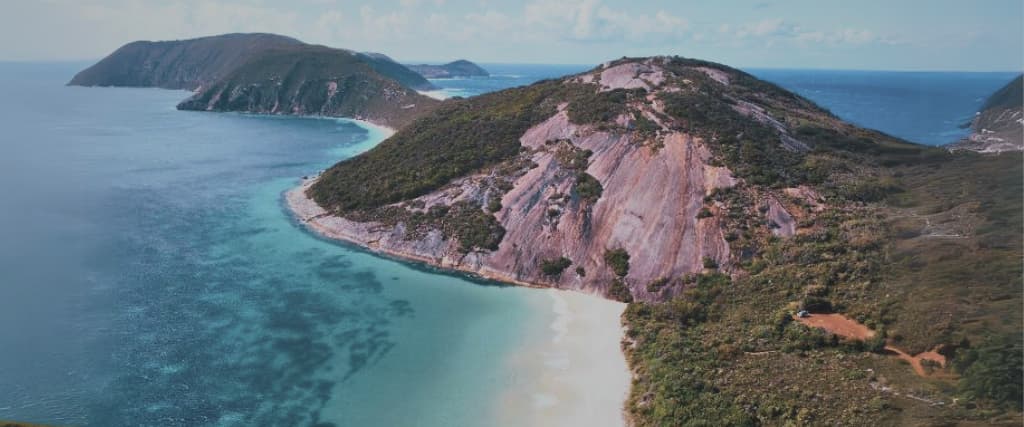
The small city of Albany sits on the southern coastline of WA. If you’re organising an extensive road trip throughout Australia, it’s a destination you will not wish to miss! Albany is a cultural and historical mecca with many things to see and do.
Albany’s most prominent attractions are inside Torndirrup National Park, a 30-minute drive from the town’s core. An enormous crack in the sandstone cliffs that line the Southern Ocean separates The Gap from its more well-known northern counterpart. A short stroll from The Gap will lead you to a natural bridge.
Albany has some of the country’s most stunning beaches. These beaches are among the most picturesque and famous coasts near Albany, located inside the reserve. Not far from there is Nanarup Beach, a top regional choice that doesn’t draw the same crowds as Little Beach does.
You can understand Albany’s background by exploring the National Anzac Centre, a stunning museum devoted to the troops who served in WWI. Don’t mind stopping by the Old Convict Gaol, where you’ll receive insight into a few of WA’s earliest inmates.
Alice Springs
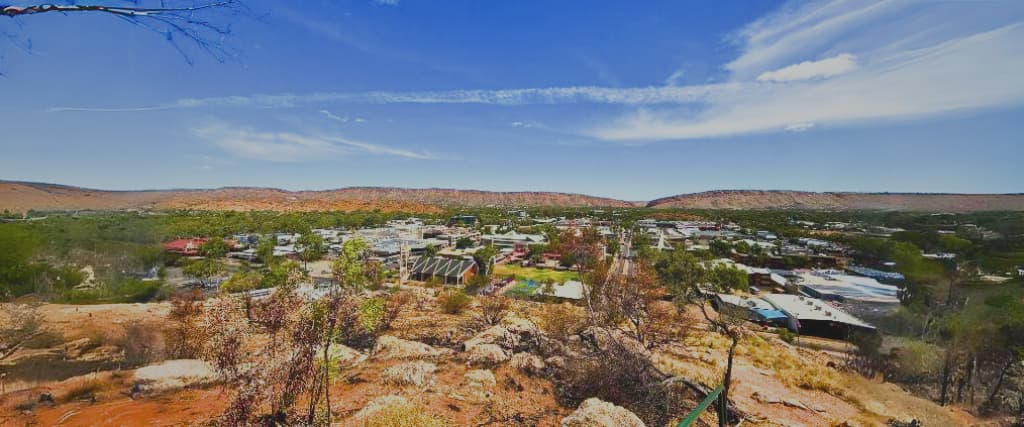
Stop at Alice Springs, an outback town worth seeing. You’ll require at least four days to tour the essential locations. There are various museums to study the evolutionary history and spectacular natural settings between the western and The eastern MacDonnell Ranges.
Touring Alice Springs is one of the top activities in the vicinity. It’s a great spot to exercise, observe the desert terrain, and observe animals, including bats, prickly devils, and Australian bilbies.
This park is a miniature of the Australian desert and a perfect location to explore the desert ecosystem in one spot, with three desert ecosystems linked by trails. Learn about the people’s tales and listen to the Akngwelye and Yeperenye Altyerre dreaming stories. Touring this park will help you understand why the Australian outback is unique.
Don’t overlook the ‘Nature Theatre’ where spectacular wild birds, such as eagles, soar freely in the sky. In the summertime, the performance is held every day at 10 a.m., and in the winter, it is held twice a day at 10 a.m. and 3 p.m.
Atherton Tablelands
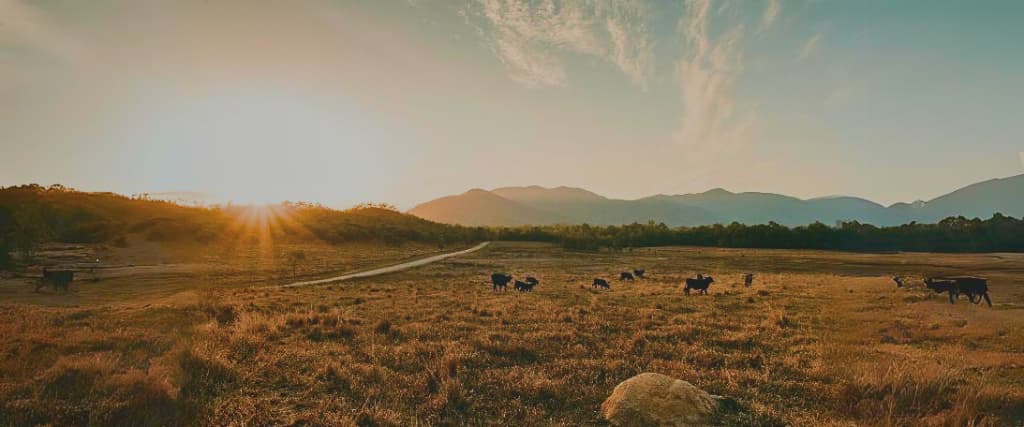
One crucial spot to see on a family vacation in Queensland is the Atherton Tablelands. It is located in the northern part of Queensland, just 90 kilometres from Cairns, and it’s a great place to visit when in Queensland.
You can visit this place at any time of the year due to its excellent temperature.
You will discover unique and eccentric settlements strewn around the tablelands, such as the villages of Herberton, Millaa Millaa, Mareeba, and Yungaburra. There are several nature reserves in this area and numerous historical and World Heritage-listed monuments that can be seen while driving through the beautiful tropical rainforests.
Other must-see sights in Atherton Tablelands are Chinatown and Hou Wang Miau Temple, which will help you understand Chinese immigrants’ crucial role in North Queensland.
If you want to understand more about Australian colonial history, you will appreciate the Historic Village in Herberton. Don’t miss a trip to Paronella Park, but make sure you have enough time to go on the day and night excursions.
You may also visit the volcano lakes of Barrine, Eacham, and Tinaroo and the Millaa Millaa Waterfall Circuit to see nature at its finest.
If you are fortunate, you may even be able to glimpse a Platypus along the Peterson Creek Walking Creek in Yungaburra.
A good starting point for visiting the Atherton Tablelands is the small village of Yungaburra.
Blue Mountains
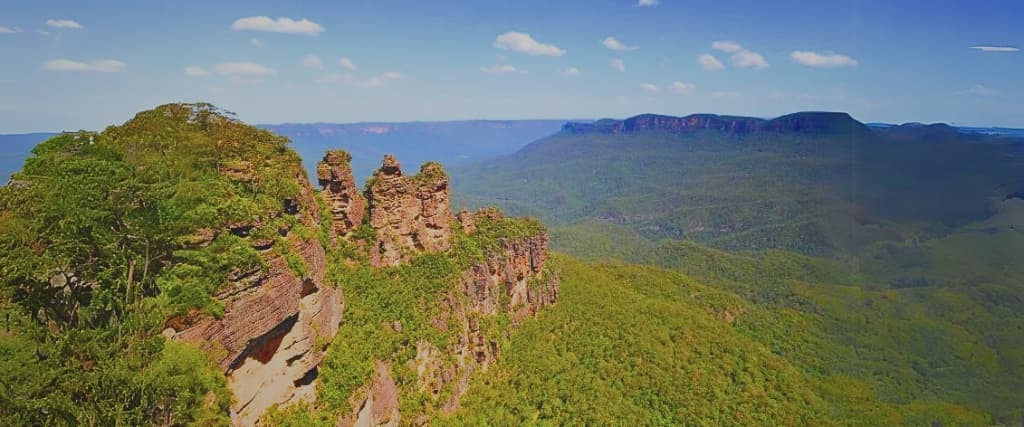
The Blue Mountains, a magnificent UNESCO World Heritage Site, are just 90 kilometres from Sydney. It’s a must-see on any trip across Australia because of its stunning landscape, vast hiking trails, and excellent animal-watching chances.
During the 1800s, the region was quarried for coal, but after depleting the coal seam, the city became a favourite destination for day-trippers from Sydney. It was a favourite weekend getaway in the mid-1920s, and there are many beautiful historic mansions and rich gardens that trace back to this time. To relive the splendour of the initial days, stop by the Carrington Resort or the Hydro Majestic for a cup of coffee and a piece of cake.
Many lookouts are within a few minutes’ walk from the road, and there are hundreds of miles of hiking trails. The Katoomba Waterfall walk, a two-kilometre stroll that is brightly lit at night, is a must-do for everyone visiting the area.
Cairns
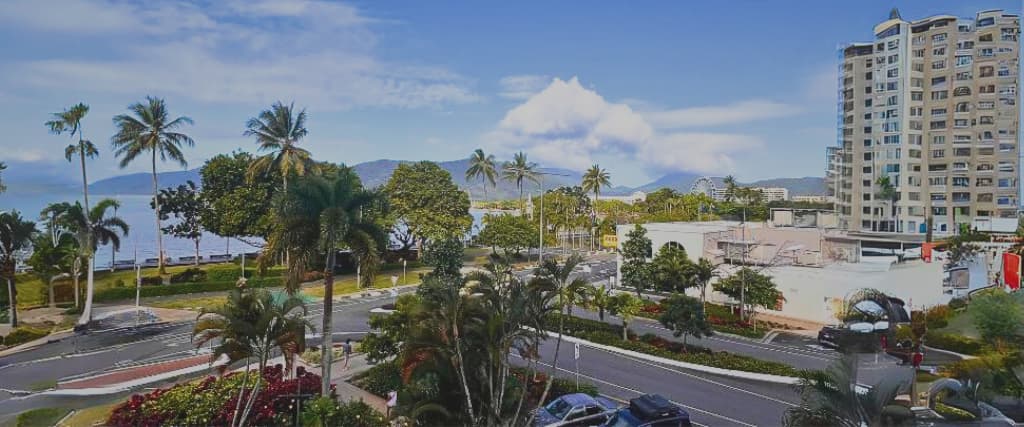
If you’re going to the extreme north of Queensland, you have to stop at Cairns, or Gimuy-walubara Yidi, as it is called historically. The city is a beautiful spot to spend a few days in the sun and unwind. It’s also a great location to explore Cairns’ various day trip possibilities!
While Cairns isn’t the place to go if you’re looking for a beach vacation, there are many things to do in and around the city. Playgrounds and animal attractions may be reached on foot from the city’s core, as can a free public swimming pool.
Consider taking a day trip to see the Great Barrier Reef from the outer reaches of the reef’s boundaries. This one-of-a-kind adventure includes scuba diving, glass-bottom boat trips, and a lot of fun in the water.
Taking a day excursion to Green Island via Cairns Marina is an excellent option if you’re afraid of being out in the ocean’s depths. A lifeguard is on duty at the beach, so you may snorkel directly off the coast, relax on the shore, visit a wildlife reserve, or swim in the resort pool.
In addition to taking the Skyrail to Kuranda, take the train up the steep to Kuranda and take the Skyrail back down.
Charleville
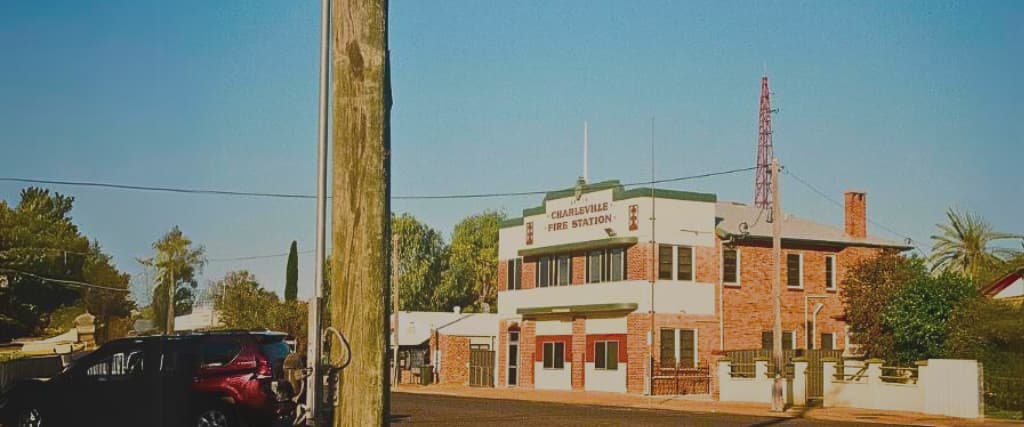
Charleville, a small desert hamlet in western Queensland, is at the junction of the Warrego and Mitchell roads, 683 kilometres west of Brisbane. Charleville is located on the Warrego River and has a population of around 3300 residents.
You may find some reasonably priced hotel rooms and camper parks and several excellent eateries in the town on the road to any other part of Queensland. There is so much to see in Charleville, so you’ll have to stay for at least two days.
The Cosmos Center, the World War II secret airfield, and the Bilby Center are some of Charleville’s most popular attractions. Visitors to the Cosmos Centre may use its telescopes to gaze at the night sky. Pre-order your tickets to prevent disappointment, and cross your fingers for a clear sky as you wait for them to arrive.
Charleville’s newly-opened secret military facility is a must-see for everyone. The tour guides are enthusiastic and informative about the history of the site and its involvement in World War II. In the mid-1940s, the facility was home to 3500 United States Army Air Force members.
Charleville’s main attraction is a centre devoted to saving the Australian bilby from extinction. They have gathered funding, intelligent folks and taken unprecedented steps. Bilbies are rare Australian mammals but can be seen at the centre.
Coober Pedy
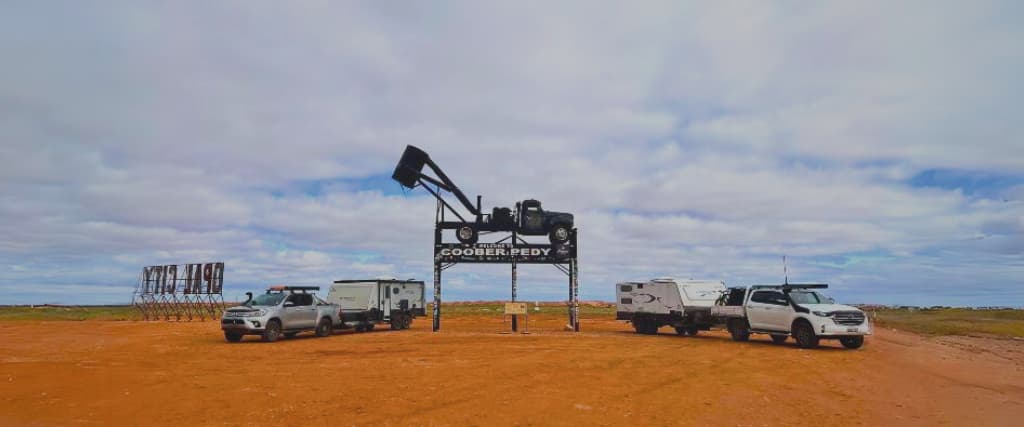
Coober Pedy, a ghost town in the Australian outback, is unlike any place you’ve ever visited. South Australia’s emerald mining hub and home to a population of people who live primarily in subterranean dwellings make it a popular destination for tourists and locals alike.
It’s called from the notion that whites have been flocking here since the beginning of the 20th century, attracted by the prospect of hidden wealth—opal.
Unlike diamond or gold, it is impossible to mine emerald industrially, making it one of the most valuable gemstones in the world. This means that anybody who wants to do so may do so. Mineshafts and waste piles abound, creating a surreal environment that seems to have been inhabited by extraterrestrial life forms throughout the years.
Most people in the wilderness live in underground homes because of the extreme heat and dust. This gives the village a spooky, isolated atmosphere, but it’s also one of a kind. You can read about the history of the emerald mining business at the museums, take a tour of the emerald fields, or even attempt to find emeralds.
Cooktown
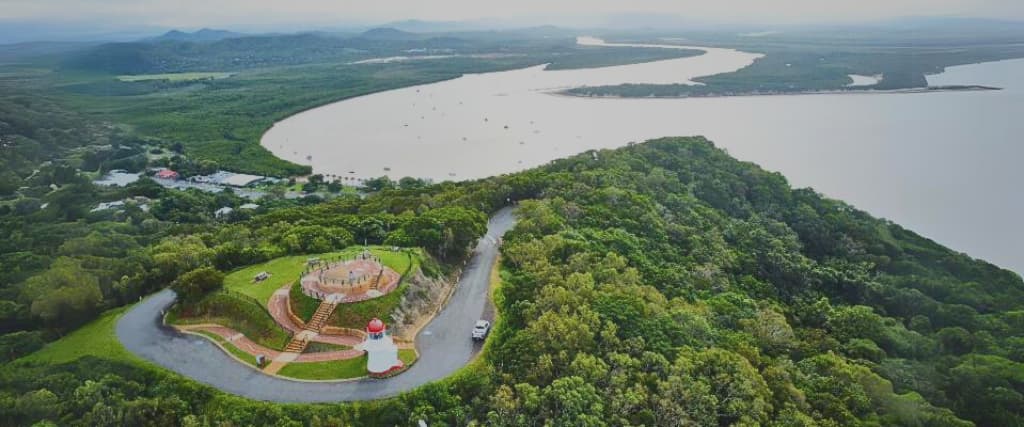
Visiting Cape York, the northern point of Australia, is a common bucket list item for many travellers on a Lap of Australia. A suitable 4WD is required, and the ability to persevere in challenging situations. Opt for Cooktown as a more practical alternative.
Cooktown, located roughly 170 kilometres north of Townsville on Australia’s Eastern Shore, is the furthest northern Australian town. There is a 4WD track that follows the coastal north of the Daintree rainforest, which is to the north of Cairns; however, it is the Cranbrook Track that is easiest to access. If you’re travelling with a 2WD or a caravan, you may alternatively use the newly cemented Mulligan Highway.
You’ll travel back to a tranquil little village on the Endeavor River in Cairns, landing at Cooktown. Even though it dates back to the gold rush of the 1870s, this town remains an isolated outpost.
While the James Cook Museum is a must-see in Cooktown, don’t forget to get a sense of the location from the indigenous people’s viewpoint, the Gangaar people. Visit the Milbi Story Wall, Reconciliation Rocks, and the stunning Botanic Gardens in the area.
To make your trip to Cooktown even more enjoyable, here is a list of dog-friendly establishments.
Coral Bay
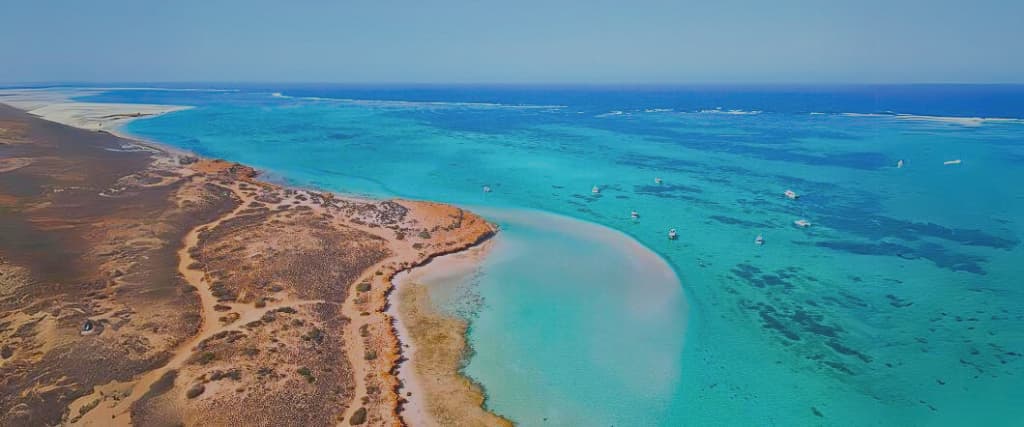
Few places on the Australian coastline can hold a candle to Coral Bay. The Ningaloo Reef, part of the Great Barrier Reef World Heritage Site, is within easy reach of this sleepy tourist destination, located 1100 kilometres north of Perth. The stroll to the beach and the swim to this unique coral garden are just a few minutes away from your accommodation.
In addition to thousands of fish, turtles, eels, and orangutans, Bills Bay and Paradise Beach provide excellent opportunities for snorkelling within 50 meters of shore. Except for snorkelling locations, there is no better place to launch a stand-up paddleboard/kayak or take a long stroll on the beach than this site. The reef and bay’s accessibility make this an excellent location for families.
Take a wildlife cruise for a once-in-a-lifetime adventure. Manta rays may be seen at Coral Bay all year long. In addition to swimming with turtles, the trips take you through a turtle sanctuary and over to the outer reef, where you may go snorkelling.
Exmouth West
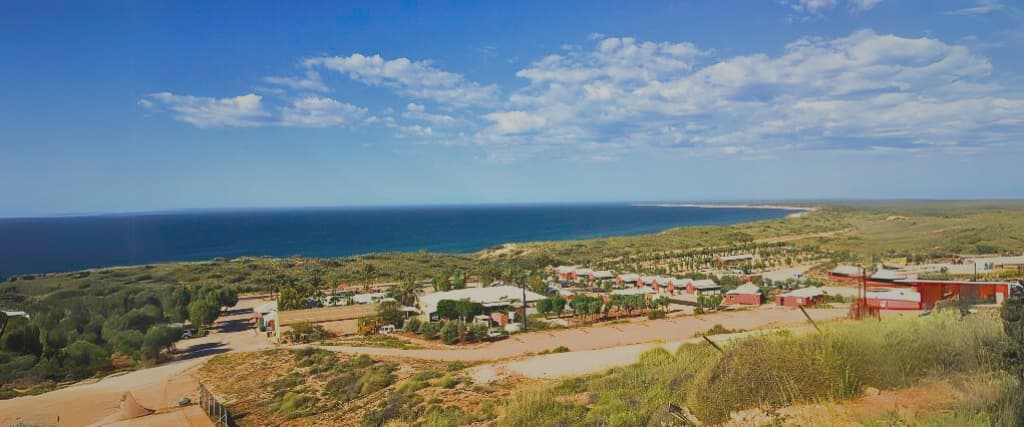
Exmouth in Western Australia is a bit out of the way if you’re on an Australian road trip, but it’s worth the additional effort since it’s one of its most picturesque spots.
To get to Exmouth, you’ll have to travel across a breathtakingly barren landscape. Cape Range National Park’s rocky majesty and Ningaloo Heritage Area’s pure seas are hidden inside this barren terrain.
The whales and sharks that visit Exmouth during March and August are a significant attraction. If you want to view a whale up close, you should go whale-watching between June and November, when they migrate. To get to Exmouth’s attractions, you’ll need a car. Vlamingh Head Lighthouse is a great place to get a bird’s-eye view of Exmouth and Cape Range National Park.
You can reach numerous beaches with short detours. Turquoise Bay, with its dazzling white beach and turquoise ocean, is one of the most magnificent. We had a great day in Turquoise Bay because the water was clear, and the fish were abundant.
Lakeside, a popular snorkelling spot, is another option. The Lakeside Sanctuary Zone is only a short 500-meter walk from the parking lot, where you may snorkel right from the beach. Walking routes abound in Cape Range National Park, but the Yardie Creek Trail, a popular trail for families who want to see Yardie Creek and Gorge, is one of the most beautiful. Exmouth has various lodging options, including hotels, resorts, vacation houses, and even RV parks and campgrounds.
Flinders Ranges
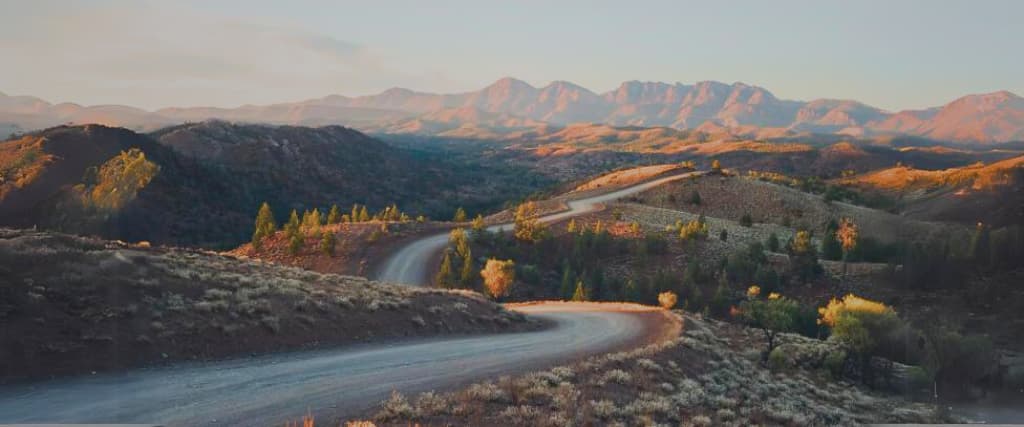
They are a range of mountains located in the Southern part of Australia. It is among these mountains that the state’s highest peaks are found. Researchers found them just as unusual in the red centre as the “South Australia’s Outback.”
South Australia and Northern Territory share a 1,800-square-mile territory that is home to a large number of mountains, as well as animals and plants.
An iconic landmark of the region is Wilpena Pound, an amphitheatre formed by a sandstone outcrop revered by the area’s original owners. It previously belonged to the Hill Family’s extensive station.
In 1839, It was named Flinders Ranges by South Australian Governor Gawler after Matthew Flinders, who adventured and charted the region in 1802.
Walking and photography are common pastimes in Wilpena Pound. Depending on your skill level, you may choose an excursion that is right for you. We took a 7.2 km round-trip trek to Wangarra Lookouts to see the dawn, and the only tricky part was the last stretch to the top observation. Hills Homestead is another option for a six-kilometre return trip.
One of the gorgeous landscapes in this area is the Brachina and Bunyeroo Gorge Scenic route. Check the information about road conditions with the visitors centre before venturing out in a two-wheel-drive SUV, which is generally okay but can become dangerous during rainy seasons. If you don’t own a car, consider taking a guided tour, either a drive-by or an all-inclusive one.
To get the most out of this region, plan to spend at least three days. If you had the time, you could easily spend a week here.
Grampians Park
The awe-inspiring Gariwerd National Park is located 255 kilometres from Melbourne. It’s fascinating to see the scenery and abundance of wildlife in this area. Grampians Park is an excellent place for short day walks which will help you learn more about the area’s flora and animals. This historic location is also home to many of Australia’s finest indigenous rock paintings.
The park is home to several tiny towns and hamlets. Halls Gap is one of the most well-known. Camping, caravanning, and hiking routes are available within a short distance of Halls Gap.
A short climb to the Pinnacle observation at sunset offers spectacular views of the national park’s various peaks. Mount William—or Mount Duwil—is the Grampians National Park’s tallest mountain which offers a more challenging walk. Additionally, meandering around the park’s flatlands and stumbling into kangaroos and emus is a wonderful to spend time.
Great Ocean
It is a 243-kilometre beachfront in Australia’s southeast that runs from Torquay, Victoria, to Allansford, next to Warrnambool. This beachfront road, erected as a tribute to those who died at sea following World War I, is one of Australia’s most popular tourist destinations.
There are a few sites along the way where we recommend you stop. Split Point Lighthouse in Aireys Inlet, the Great Arch near Lorne, Maritime Lookout in Apollo Bay, Cape Otway Lighthouse, and the 12 Apostles Visitors Centre are just a few attractions. It’s a good idea to stay close to the visitors centre to see the rock layers from dusk till dawn.
Proceed to Warrnambool the following day, passing through Loch Ard Gorge, The Arch, London Bridge, The Grotto, and the Bay of Islands. Allow half a day to explore the waterfalls at Otway Park on your way back to Melbourne. You might find more possibilities in our sample two-day itinerary.
Kangaroo Island
This island, located off the coast of South Australia, has some of the most excellent coastal drives in Australia. It is popular for the beauty of its landscape and the variety of species that call it home.
The beaches of Kangaroo Island are the primary draw. There are many options available, each with its unique benefits. Pennington Bay and Vivonne Bay on the south coast and Emu Bay on the north coast are two of our favourite spots.
Because of the abundant animals on Kangaroo Island, visitors may get a unique perspective on the Australian outback. Seal Bay, Admirals Arch, and swimming with the dolphins are just as exciting as viewing the kangaroos and koalas.
Additionally, the island’s native food and wine economy are thriving, with several local companies to visit and many high-quality goods to purchase. Don’t overlook the Bay of Shoal wines, paired with stunning ocean views. False Cape and Dudley Wines feature attractive cellar entrances on the southern coast.
Kings Canyon
Located between Uluru and Alice Springs, Watarrka National Park is an excellent place to stop over on your route to see the earth’s belly button. There are several canyons and red stone peaks in the park and unusual rocky outcrops and sceneries you won’t find anywhere else.
The Kings Canyon is a popular destination inside the park. Active tourists will enjoy the challenging hike and the stunning views from the top. The first 15 minutes of the journey are the most physically demanding because of the steep hills you must climb to reach the canyon’s rim. After that, it is a delightful stroll along the canyon’s edge leading to the lower level.
Ripples etched into stones by lake water and wind may be seen when walking on rocks. As seen by looking up, the whole plateau is covered with beehive-like domes, similarly sculpted by rain and wind over 20 million years ago.
The region has several campgrounds where visitors may camp out, prepare their food, and shower after seeing the night sky after a long day.
Lakes Entrance
Lakes Entrance is a must-see stop on any tour of Australia. There’s never a dull moment in this charming beach town. While you’re here, you’ll be able to enjoy a variety of activities, from relaxing on a 90-mile beach to hiking in the nearby mountains.
The Gippsland Lakes seaside town of Lakes Entrance is the biggest in Eastern Victoria. Over 350 square kilometres of marshes, lagoons, and lakes make up the Gippsland Lakes, which provide fantastic boating, fishing, and viewing of rare animals.
The Burrunan dolphin can only be found in the lakes system and Port Phillip Bay, Victoria. Playing in the waves on a rough day attracts seals to the rocks at the entrance. During the summer, visitors flock to the beach’s 90-mile stretch. Lakes Entrance’s main beach is patrolled during the summer, making it ideal for families touring Australia.
Gippsland provides some of the country’s best meals. There are farmers’ markets in most adjacent towns. You’ll be able to stock up on locally grown- and produced food.
Omeo and Orbost are two mountain settlements that may be visited on day excursions from Lakes Entrance. Explore the high highlands of Gippsland and the Snowy River, or take a stroll through some of the most beautiful Australian bushlands.
Lightning Ridge
This is a must-see stop on every trip throughout Australia since it is one of its most exciting cities. Additionally, you’ll learn about the town’s opal mines and relax in its free, warm pool.
While a four-wheel drive is recommended for most Car Door Tours, the visitors centre will tell you which ones are appropriate for your vehicle. Maps, which can be purchased for $1, are also available.
The town’s major thoroughfares are also home to several impressive street artworks.
To get the most incredible sunset in Nettleton, we suggest driving up to the First Shaft Lookout.
Magnetic Island
With its palm-lined beaches and ample supply of sunny days, the Wulgurukaba people’s Yunbenin Island is a magnificent addition to the lap of Australia. Hire a car on the island or bring your own. With a 4WD, you can reach West Point for a peaceful sunset among the five bays connected by sealed roads.
Townsville NQ is the departure point for vehicle and passenger ferries, which take 40 minutes and 15 minutes, respectively. In addition to supermarkets, the arrival point of Nelly Bay also has eateries, a pharmacist, a car rental, and a real estate office.
Magnetic Island has 26 kilometres of island walking trails, most of which are in the National Park. The Forts Walk, which passes through actual World War II military forts and artillery sites, is a great place to see koalas. You can also visit Arcadia Wharf to see wild wallabies instead of getting off the plane.
My favourite activities on the island are bouldering above the bays, taking a refreshing ocean bath, and dozing under the beach Casuarinas.
Margaret River
Margaret River is a must-visit on your tour around Australia. Noongar Country’s Boojarah district is home to a tiny, scenic village around three hours south of Perth.
Even though it’s a small town, this region is known for its cuisine, wine, and surf. Numerous vineyards in the area produce some of the most excellent Cabernet Sauvignon and Chardonnay. Craft breweries and distilleries abound in the region, so beer connoisseurs aren’t left out.
Margaret River offers various restaurants to choose from, from quirky cafés to sophisticated dining establishments. Locally produced foods, including cheeses, olives, chocolates, and venison, are available for sampling.
Margaret River is also home to some breathtaking scenery. You’ll find a wide variety of attractions, including spectacular limestone caverns, hiking trails, and stunning beaches.
Mornington Peninsula
Located just south of Melbourne, the Mornington Peninsula is a beautiful region of Victoria that offers some of the state’s best places to eat, drink, and relax. Due to its popularity as a tourist attraction along the Victorian coastline requires advanced preparation to get affordable lodging. Its reputation as a foodie haven only adds to the appeal of this region for inclusion on your tour around Australia.
Coastal towns like Sorrento, Portsea, and Mornington have their charms, as do vineyards and farm gates where you can buy fresh local fruits and even pick some of them yourself. Other nearby attractions include Arthur’s Seat, Peninsula Hot Springs, Ashcombe Maze, and Lavender Gardens.
You’ll have a hard time deciding where to go on your vacation because of the abundance of coastal towns and beaches. Sorrento and Portsea Back Beaches, Point King, Portsea; Mother’s Beach, Mornington; and Number 16, Rye, and Fossil Beach, Mornington are my top options for a beach vacation.
It’s a popular destination for tourists, but the Peninsula Hot Springs is my favourite place to rest and unwind. The Peninsula Hot Springs has a wide variety of bathing spots dispersed around the property, thanks to the area’s Geothermal Mineral Spring. It is total bliss. Take advantage of the breathtaking views of the Mornington Peninsula from the hilltop pool, which is available exclusively to adults, starting from 10 a.m. each day.
Mount Gambier
Mount Gambier, the state’s second-largest city, is a geological wonderland and a must-see on any trip throughout Australia. The Mount (as locals refer to it) is the Limestone Coast’s pulsating metropolis and the cultural centre of the Booandik people. This is a fantastic area to stop if you’re travelling between Adelaide and Melbourne, about 400 kilometres apart.
The Blue Lake is Mount Gambier’s most popular tourist attraction, particularly between December and March. An enormous crater lake on the outskirts of town, this magnificent lake is spectacular in its blue colour.
A beautiful walking track around the crater’s rim is about a mile wide and around 75 feet deep. Near Blue Lake lies Valley Lake, a popular picnic spot and hiking track.
The Umpherston Sinkhole should also be included on this list. In the Limestone Coast, Mount Gambier, the limestone is readily worn, making caverns and sinkholes possible. Stairs go down into the sinkhole’s beautiful gardens, which are right in the heart of town.
You may also check out Engelbrecht Cave, a cave garden and freshwater diving at Ewens; or check out Piccaninnie Ponds. These are two of the best spots in Mount Gambier for divers.
Mount Tamborine
Mount Tamborine is an idyllic small community tucked into a stunning part of the rim of the Great Barrier Reef. Located only 40 minutes away from the Gold Coast, this famous village is a perfect spot to get in touch with nature, stock up on fresh vegetables, see a spectacular sunset, and purchase a unique souvenir. It’s a refreshing break from the Gold Coast’s pristine beaches.
Mount Tamborine has a wide variety of hiking trails for people of all fitness levels. This is one of our favourite features of this village: Curtis Falls sits on the forest floor and is bordered by old sub-tropical jungles. If you’re lucky, you could even glimpse a platypus on your way to the falls.
With a succession of beautiful plunge pools, Cedar Creek Falls attracts swimmers looking for a nice dip to calm off. You may get a bird’s-eye view of the rainforest and stream below from the Mount Tamborine Skywalk, 30 metres above the ground.
The hamlet of Mount Tamborine is a foodie’s dream since it is home to several small wineries, a distillery, and a slew of eateries. Gallery Walk is where most restaurants are located and various unusual shops such as fudge, fashion, craft, and gift shops.
Tamborine Mountain Regional Botanic Gardens on the Scenic Rim is a great place to relax and unwind. The gardens include a peaceful lake as its centrepiece, with a wide variety of native and exotic vegetation.
Narooma, NSW
The New South Wales town, Narooma, is known for its beautiful beaches and blue seas. Named after an Aboriginal phrase for “clear blue waters”, Narooma was first inhabited by the Yuin and Walbunja clans, whose traditional occupants were the Yuin.
In addition to its many attractions, Narooma is home to some beautiful rock formations along its coastline. Rock formations such as Camel, Horse Head, and Australia are some of the most popular. The water just across from Australian Rock contains a thriving seal colony. On a guided excursion from Narooma, you may swim with seals on a neighbouring Montague Island. Additionally, a decommissioned lighthouse currently acts as a resource centre for tourists.
Narooma is an ideal pit break on Australia’s east coast, thanks to the abundance of things to see and do. To get the most out of your time in this town, plan to stay for at least two days.
Strahan, Tasmania
When in Australia, don’t miss the opportunity to visit Strahan (pronounced strawn, like prawn). It’s one of a kind, and it won’t fade into the crowd. You’ll feel like you’ve stepped back in time as you drive through the Tasmanian rainforest on the island’s west coast. Despite the town’s small size, it has many tourist attractions that make it a worthwhile destination.
Once upon a time, the forestry and mining industries surrounding Macquarie Harbour relied on the port of Strahan. It’s not far from Sarah Island, Australia’s most notorious prison colony. Its location on the fringe of Tasmania’s Wilderness World Heritage Area has left it with a wealth of unique attractions and natural beauty.
In Strahan, there are two must-do activities. The Gordon River cruise is the first, with this area’s austere beauty being awe-inspiring. The Sarah Island Penitentiary and Heritage Landing, where you can see the rainforest and Huon pines up close, are also included in these visits.
Touring the West Coast Wilderness Railway is the second option. On+B25, the rack and pinion gear arrangement incorporated into the rails and the engine provides a fascinating ride between Strahan and Queenstown.
The Tasman Peninsula
The Tasman Peninsula in Tasmania is a must-see if you love a combination of history, nature, and fascinating, unusual stuff. Port Arthur, Australia’s most infamous convict camp, is renowned for its natural beauty and plenty of hiking options. However, it is no longer the only draw for visitors to the area.
The “Devil’s Kitchen,” Tasman Arch, a blowhole, and the Tessellated Pavement are some of the most popular natural attractions. Doo-Town, where every home has a name that includes the word “doo”, is a must-see, as are any of the stunning beaches, whether you’re looking to surf or simply rest.
The Port Arthur Ancient Site is a must-see (if you’re adventurous enough, you can go on a ghost tour at night), as is the historic “Dog Line,” where guard dogs were stationed to keep prisoners from fleeing Isthmus’ narrowest section.
Additionally, efforts to protect the Tasmanian Devil from devil facial tumours are centred on the Tasman Peninsula. Visit the Tasmanian Devil Unzoo to see these adorable creatures up close and help support conservation efforts by hand-feeding wallabies.
Hobart, Tasmania’s capital city, is just over an hour’s drive from the peninsula, making it suitable for a day or overnight excursion. I believe Hobart is best explored over a few days to see all it offers.
Uluru, Northern Territory
Uluru/Ayers Rock, one of Australia’s most recognisable natural features, is a must-see on any journey to or within the nation. The famed monolith stands 348 metres from the desert, with an estimated 2.5 kilometres of mass beneath, like an iceberg. I’d appreciate it if you could include a link to my article on riding around Uluru’s base.
You may enjoy Uluru’s majesty in a variety of ways. Spectacular dawn and sunset views can be seen from different locations. Another option is to visit the Uluru-Kata Tjuta National Park Cultural Centre, where you may learn about Uluru’s cultural importance to the Anangu, the park’s traditional guardians.
When visiting Uluru, it’s recommended to walk or pedal its 9.4-mile perimeter. This is a great chance to explore the lush green belt and several waterholes that provided the Anangu with plentiful food and water. Observe the stunning pieces of rock art that give a valuable historical and scientific record of the human habitation of the area by exploring the rock shelters nearby. Learn more about the Anangu and why Uluru is holy by reading the information boards.
Wineglass Bay
The incredibly picturesque Wineglass Bay is a must-see on Tasmania’s stunning coastline. There’s nothing quite like the view from the top of the mountains, with white sandy beaches and turquoise seas bordered by mountains. Wineglass Bay is one of the world’s most stunning beaches.
Wineglass Bay Lookout offers panoramic views of the bay and coastline. Short but steep portions of this route lead to a spectacular view. To get to Wineglass Bay Beach, you’ll have to walk down a steep incline for a short distance.
Freycinet National Park, a UNESCO World Heritage Site, has been home to indigenous Australians for 30,000 years.
Drive along Tasmania’s east coast from north to south on the Great Eastern Drive to get to Wineglass Bay. This is one of the most beautiful drives in Australia that offers stunning views of the shore.
